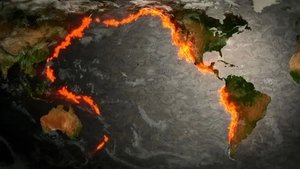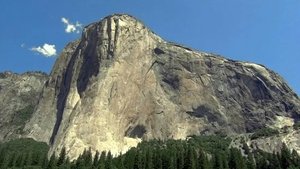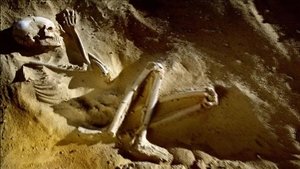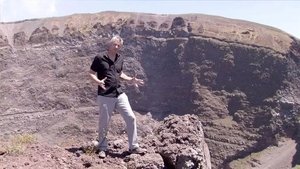
It is the tallest and biggest mountain on earth, as far removed from sea level as it's possible to be--and yet its sedimentary layers contain fossils that were once creatures that lived on the ocean seabed. The Himalayas formed when India smashed into Asia--propelled by plate tectonics. Everest is still rising but its height is limited--extreme erosion counteracts and limits the amount of uplift.

The single longest linear feature on Earth--the "Ring of Fire" circles almost the entire Pacific. It is a ring of active volcanoes from White Island just north of New Zealand, through the South China seas, Japan, Kamchatka, the Aleutians, the Cascades and down through the Andes. Almost 25,000 miles long, it is one of the most awesome sights on Earth.

From Alaska to New Mexico, the Rockies are one of the great mountain belts of the world--caused by tectonic forces of the Pacific Plate pushing against the North American continent. They have formed as the earth's continental crust has been shortened under pressure--by around 1 inch a year. What's more, they are still rising and they are still young in geologic terms: when the dinosaurs roamed the Earth they had not even started to form.

The Sierra Nevada, North America's highest mountain range, contains one of the most awe-inspiring geological features on the planet: Yosemite Valley. Walled by sheer 3,000-foot granite cliffs and made from one of the toughest rocks on earth, it is home to the mighty El Capitan and iconic Half Dome. Yet how this extraordinary valley formed has been the subject of controversy for over 100 years. Was it carved by gigantic glaciers or a cataclysmic rifting of the Earth?

Africa's Sahara Desert is the size of the United States, making it the largest desert in the world. It's also the hottest place on the planet. But now an astonishing series of geological discoveries has revealed this searing wasteland hides a dramatically different past. Scientists have unearthed the fossils of whales, freshwater shells and even ancient human settlements. All clues to a story that would alter the course of human evolution and culminate in biggest climate change event of the last 10,000 years.

Mt Vesuvius is the world's most dangerous volcano, and it threatens three million people. It was responsible for the most famous natural disaster of ancient history, the eruption that destroyed the Roman city of Pompeii. And its most recent blast was caught on film in 1944. Today Vesuvius is the most densely populated volcano in the world. Now recent scientific discoveries show that it is capable of an eruption larger than ever before thought possible and that hidden beneath Vesuvius there is a vast magma chamber of boiling hot rock, ready to come out.

The Grand Canyon is nearly 300 miles long and over a mile deep. You could stack four Empire State buildings one on top of the other and they still wouldn't reach the lip of the Canyon. As vast tectonic plates clash and grind against one another a giant plateau has been pushed up over a mile in the air. The Colorado river, flowing from high in the Rockies and carrying a thick load of sediment, has carved an amazing canyon in the rising plateau.